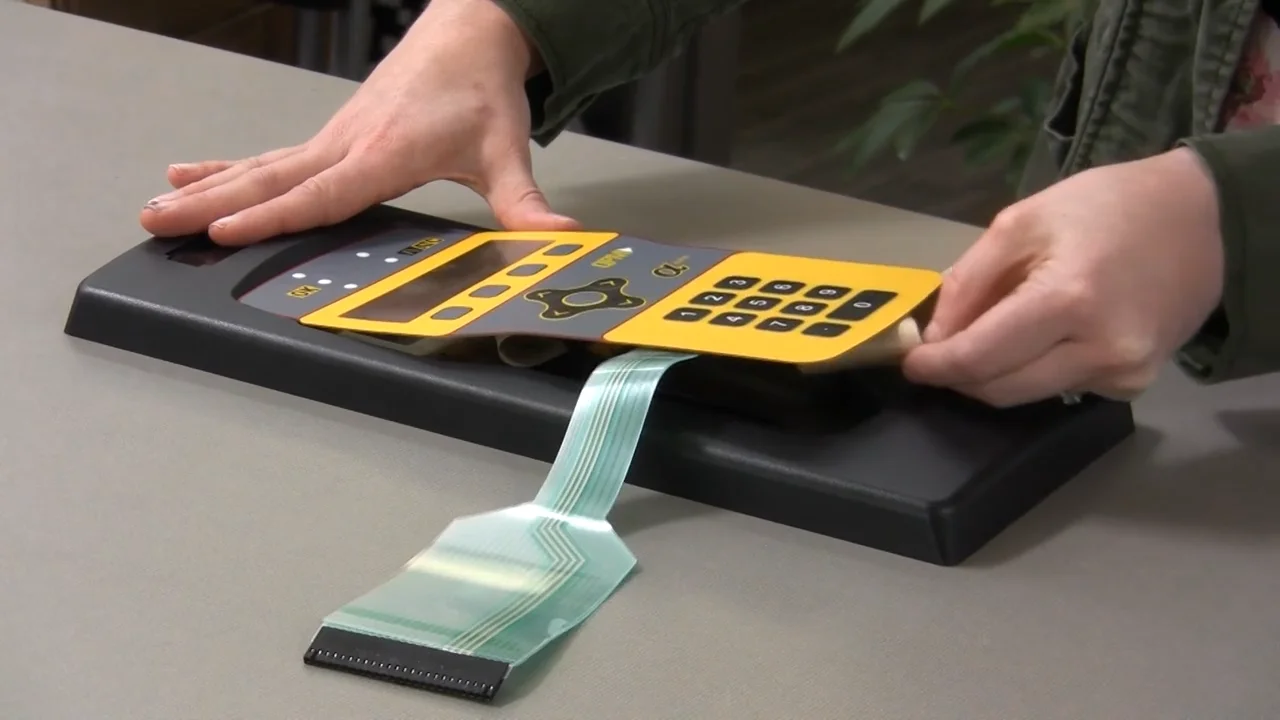Discover How a Membrane Switch Boosts Sturdiness and Performance in Devices
Discover How a Membrane Switch Boosts Sturdiness and Performance in Devices
Blog Article
Comprehending the Capability of Membrane Changes for Interface Tools
The capability of membrane switches over stands for a substantial advancement in interface style, combining effectiveness with aesthetic versatility. These buttons operate with a multi-layered structure that translates individual communications into electrical signals, enabling for both compact layouts and strength against environmental elements. As sectors increasingly focus on user experience, understanding the nuances of membrane layer button innovation ends up being crucial. What implications do these advancements hold for future applications, and exactly how might they redefine customer communications throughout numerous tools?
What Are Membrane Layer Switches?
Membrane layer switches are innovative user interface devices that promote user communication with digital equipment. These flexible elements contain multiple layers, consisting of a graphic overlay, spacer, and a published circuit layer. The layout enables a smooth integration right into different electronic tools, boosting both the aesthetic and functional elements of interface.
Membrane switches are generally used in a wide variety of applications, from family home appliances to commercial machinery and clinical tools. Their building and construction generally includes a slim account, making them a perfect selection for portable styles. The tactile comments offered by these buttons can be crafted to fulfill certain user choices, guaranteeing efficient communication between the individual and the gadget.
Resilience is another considerable benefit of membrane buttons, as they are resistant to dirt, wetness, and chemicals, which improves their life expectancy in requiring environments. In addition, these buttons can be customized in regards to form, dimension, and visuals layout, allowing for branding and user-specific features. In general, membrane layer switches stand for a practical remedy for boosting customer experience in digital devices, integrating performance with visual charm in an effective manner.
How Membrane Layer Switches Over Job
Operating on a simple principle, membrane changes utilize a layered construction to sign up customer input successfully. Each switch includes numerous layers, consisting of a published circuit layer, a spacer layer, and a leading graphic layer, which are created to interact perfectly. When an individual presses the top layer, it compresses the spacer layer, bringing the conductive components of the circuit layer right into contact with each other.
This contact develops a shut circuit, signaling the tool to carry out a particular feature. The style enables numerous configurations, including tactile feedback, which can improve the individual experience by giving a physical experience upon activation. The materials utilized in membrane layer switches usually consist of flexible substratums, such as polyester or polycarbonate, which make sure resilience and durability against wear and tear.

Trick Advantages of Membrane Buttons

One more significant advantage is their density. Membrane layer switches are slim and lightweight, which allows suppliers to conserve space in their devices without sacrificing functionality. This feature is especially helpful in applications where weight and quantity are essential factors to consider.
Furthermore, membrane layer buttons are resistant to dust, wetness, and chemicals, enhancing their longevity. This strength expands their life expectancy and reduces the demand for regular replacements, resulting in cost financial savings in time.
Additionally, the tactile responses supplied by membrane layer buttons can be maximized to enhance customer communication. They navigate to these guys can consist of attributes such as increased buttons or audible clicks, improving functionality and customer experience.
Applications Across Industries
User interface devices using membrane buttons are widespread in a large array of industries, showcasing their versatility and performance. Membrane Switch. In the clinical field, membrane layer buttons are important to gadgets such as analysis devices and person monitoring systems, where their longevity and ease of cleaning are crucial for maintaining health criteria. In the automobile sector, these switches are used in dashboard controls and infomercial systems, supplying a sleek and contemporary interface for individuals.
Additionally, the consumer electronic devices industry take advantage of membrane layer buttons in devices and handheld devices, where portable style and easy to use user interfaces improve individual experience. Industrial applications also take advantage of membrane layer switches over for control panels in equipment and automation systems, emphasizing their toughness and resistance to harsh atmospheres.
In the aerospace and protection industries, membrane layer buttons are made use of in cabin controls and tools, where integrity and efficiency under severe conditions are extremely important. Additionally, the pc gaming sector progressively integrates membrane layer switches in controllers and gallery machines, contributing to an engaging customer experience. On the whole, the convenience of membrane layer switches over enables their widespread use across countless industries, highlighting their importance in modern individual interface layout.
Future Fads in Membrane Layer Switch Modern Technology

Additionally, the use of innovative materials, such as polycarbonate and polyester movies, is expected to climb, supplying improved durability and resistance to environmental stress factors. These materials add to the total long life of membrane layer buttons, making them ideal for harsher industrial applications.
Furthermore, the incorporation of smart technology, consisting of IoT connectivity, will certainly enable membrane layer switches to interact with various other linked here devices and systems, helping with an extra interactive individual experience. This trend straightens with the growing need for smart gadgets throughout various industries, from medical care to consumer electronics.
Last but not least, customization alternatives are expected to broaden, allowing producers to create bespoke options tailored to certain user demands and choices. These advancements will certainly place membrane buttons as vital elements in the development of individual interface technology.
Verdict
To conclude, membrane layer changes stand for an essential development in user interface modern technology, offering a reliable and functional service for varied electronic applications. Their split construction facilitates compact style, while attributes such as responsive responses improve customer communication. The durability versus ecological factors even more strengthens their energy across several industries. As improvements in material science and touch picking up technologies proceed, the performance and applicability of membrane switches are expected to increase, reinforcing their value in contemporary digital gadgets.
Report this page